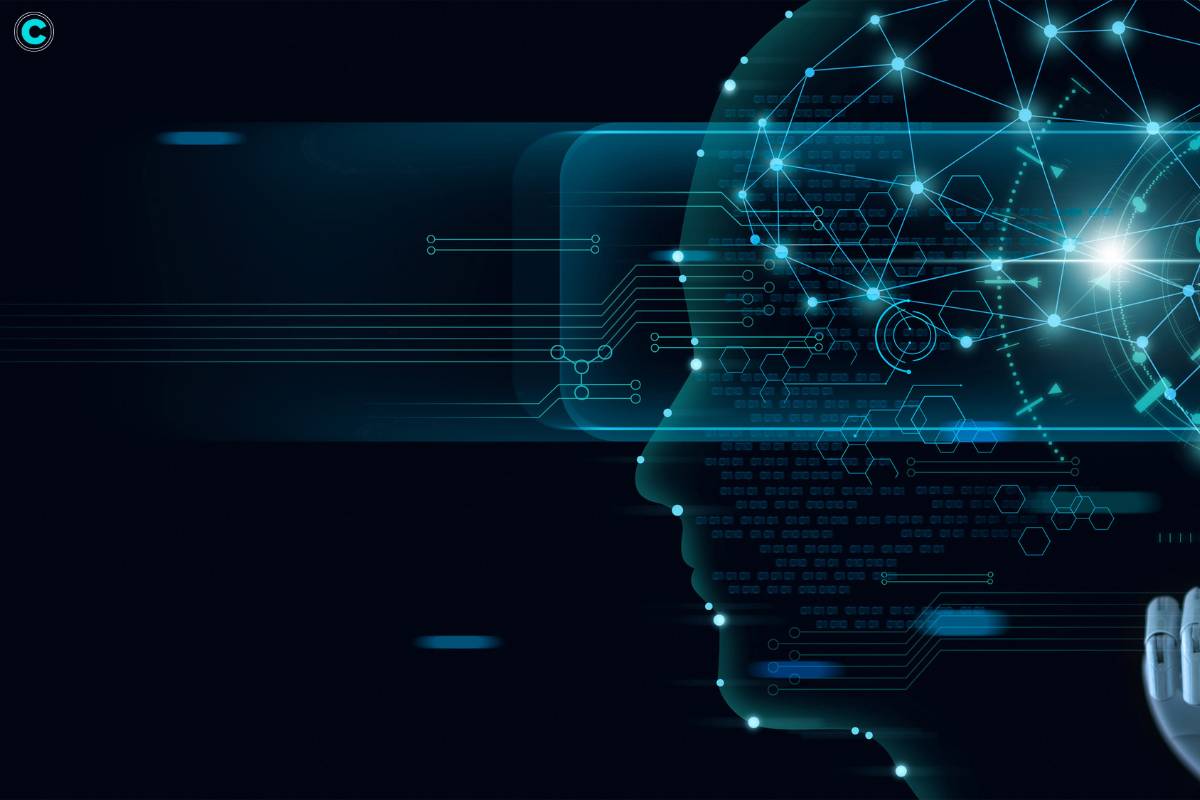Artificial Intelligence (AI) in cybersecurity is proving to be a game-changer in the ever-expanding digital ecosystem, where cyber threats are growing more complex. Artificial intelligence (AI) improves proactive defence against cyber threats by analyzing large datasets and identifying patterns. This article examines the various uses, advantages, and changing terrain of cyber threats related to artificial intelligence and cybersecurity.
Understanding AI in Cybersecurity:
Defining AI in Cybersecurity:
AI in Cybersecurity refers to the application of artificial intelligence and machine learning techniques to bolster the defense mechanisms against cyber threats. Traditional cybersecurity approaches often struggle to keep pace with the dynamic nature of cyber threats, making AI a vital tool for proactive threat detection, incident response, and mitigation.
The Role of Machine Learning:

Machine Learning (ML), a subset of AI, plays a pivotal role in cybersecurity. ML algorithms learn from historical data, enabling them to identify patterns, anomalies, and potential threats. As the volume and complexity of cyber threats grow, ML algorithms provide a scalable and effective solution to analyze and categorize these threats.
Applications of AI in Cybersecurity:
1. Threat Detection and Analysis:
AI is instrumental in detecting and analyzing cyber threats. By continuously analyzing network traffic, user behavior, and system logs, AI algorithms can identify patterns indicative of malicious activities. This proactive approach enables cybersecurity professionals to respond swiftly to potential threats before they escalate.
2. Behavioral Analysis for Anomaly Detection:
AI-driven behavioral analysis is crucial for identifying anomalies in user behavior. By establishing baselines of normal activities, AI algorithms can detect deviations that may indicate unauthorized access or compromised accounts. This real-time analysis enhances the ability to identify insider threats and advanced persistent threats.
3. Endpoint Security:
Endpoint security, focused on protecting individual devices connected to a network, benefits significantly from AI. AI-powered solutions can detect and respond to endpoint threats in real time, mitigating the risk of malware infections and unauthorized access. This is particularly valuable as organizations embrace remote work and face diverse endpoint challenges.
4. Email Security:

Phishing attacks, often initiated through emails, pose a significant threat to organizations. AI in cybersecurity enhances email security by analyzing email content, attachments, and sender behavior. Machine learning models can identify phishing attempts, malicious links, and suspicious email patterns, providing an additional layer of defense.
Benefits of AI in Cybersecurity:
1. Automation for Rapid Response
One of the primary benefits of AI in cybersecurity is automation. AI algorithms can automate routine tasks, such as threat detection, incident response, and pattern recognition. This automation accelerates the response time to cyber threats, minimizing the impact of security incidents.
2. Scalability and Adaptability:
The dynamic nature of cyber threats requires scalable and adaptable solutions. AI provides the scalability needed to analyze large datasets and adapt to evolving threat landscapes. As cyber threats become more sophisticated, AI’s ability to learn and evolve ensures a resilient defense.
3. Reducing False Positives:
Traditional cybersecurity solutions often generate false positives, leading to unnecessary alerts and draining resources. AI, with its ability to analyze contextual information and learn from historical data, reduces false positives, allowing cybersecurity teams to focus on genuine threats.
Challenges and Considerations:
1. Adversarial Attacks:
While AI enhances cybersecurity defenses, it is not immune to adversarial attacks. Cybercriminals may employ techniques to manipulate AI algorithms, leading to misclassifications or evading detection. Continuous research and development are crucial to stay ahead of adversarial tactics.
2. Interpretable AI:
The lack of interpretability in AI models can be a challenge. Understanding how AI algorithms reach specific conclusions is essential for cybersecurity professionals. Ensuring transparency and explainability in AI models enhances trust and facilitates effective collaboration between AI systems and human analysts.
The Evolving Landscape of Cyber Threats:
1. Advanced Persistent Threats (APTs):

AI is becoming increasingly vital in combating Advanced Persistent Threats (APTs), which are prolonged and targeted cyberattacks. AI-driven behavioral analysis and anomaly detection play a crucial role in identifying the subtle and persistent nature of APTs.
2. Ransomware and AI-driven Attacks:
Ransomware attacks, often characterized by their destructive nature, are leveraging AI for more effective targeting and evasion. AI-powered attacks can adapt to cybersecurity defenses, making them more challenging to detect and mitigate. This highlights the need for advanced AI-driven cybersecurity measures.
The Future of AI in Cybersecurity:
1. AI-driven Threat Hunting:
The future of AI in cybersecurity involves leveraging AI for proactive threat hunting. Rather than waiting for alerts, AI algorithms can continuously hunt for potential threats, analyze emerging patterns, and predict future attack vectors. This shift towards proactive defense is crucial in the face of evolving cyber threats.
2. Zero Trust Architecture:
AI is integral to the implementation of Zero Trust Architecture, a cybersecurity paradigm that assumes no trust, even within the internal network. AI algorithms continuously monitor and analyze user and device behavior, ensuring that trust is continually verified based on real-time activities.
Conclusion: Fortifying Cybersecurity in the AI Era
AI in cybersecurity is becoming more and more important as the digital landscape changes, helping to strengthen defences against a wide range of cyber threats. AI offers a diversified approach to cybersecurity, encompassing automation, adaptability, behavioral analysis, and threat identification. Adversarial attacks are one example of a challenge that emphasizes the necessity for continued study and development. The constantly changing cyber threat scenario emphasizes how critical it is to adopt AI-driven solutions in order to stay one step ahead of competitors.

The Evolution of Cognitive Computing Systems in Threat Detection and Response:
Modern technology must be integrated into cybersecurity operations because hackers and cybersecurity experts are engaged in a never-ending arms race.
Proactive threat hunting and the creation of Zero Trust Architecture are among the benefits that artificial intelligence in cybersecurity promises to bring. The integration of artificial intelligence (AI) has become a strategic priority for organizations as they traverse an increasingly complex threat landscape. By harnessing the power of AI, cybersecurity professionals can usher in a new era of resilience, adaptability, and effectiveness in safeguarding digital assets against the ever-evolving realm of cyber threats.






